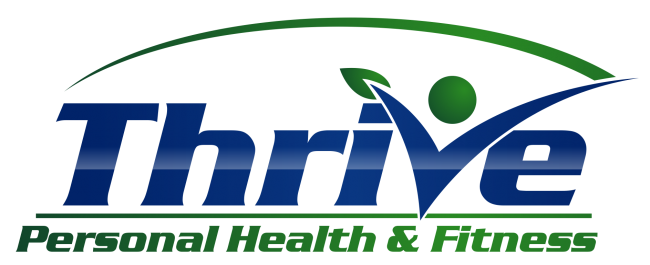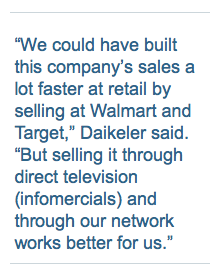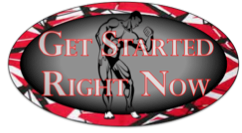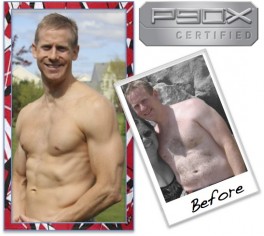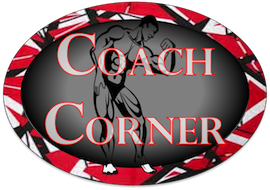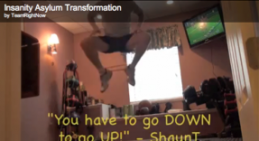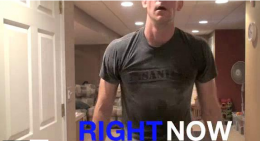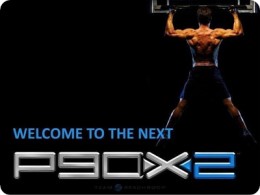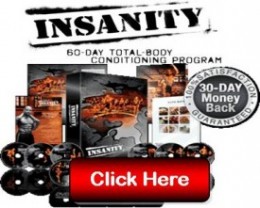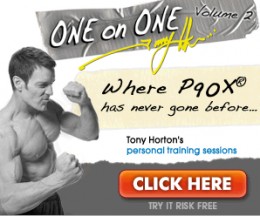Beachbody Growth!
Think that Beachbody’s mission of ending the tend of obesity with hard work, exercise, and eating right is a fad? Here are (2) great articles from CNBC and (1) from the LA Business Journal. Two of the articles were written in January 2011 and one was written in June 2010. The growth of the company is extraordinary and the fuel has been not only been in producing great products and supporting them with great service, but also by starting the coaching network. Josh Spencer is mentioned in the article in June 2010. Josh is one of our upline coaches who has seen tremendous success with the business. As of January 2011, Beachbody had 51,000 coaches and paid out $35M in commission to this network of Beachbody advocates. The article from the LA Business Journal (written on January 3) references 345 employees. Today (February 7) Beachbody announced their 400th employee!
+++++++++++++++++++++++++++++++++++++++++++
Beachbody Grows Exponentially Thanks To Network Marketing
CNBC Sports Business Reporter
There are not many companies these days that can do $400 million in sales and remain relatively anonymous.
 |
|
Source: Beachbody
|
Yet Beachbody, a private company, grossed nearly as much as Groupon did last year and very few people talk about the robust engine that is behind exercise workout programs like P90X, INSANITY and Turbo Jam.
Under the leadership of co-founder Jon Congdon and Carl Daikeler, the company has developed a business model that seems to be Teflon, turning successful converts of its programs into network marketers who ensure that the brands flourish.
Many multi-level marketing companies are based on building a network of sellers and distributors getting rewarded based on the size of their network.
Most often, the people who have gotten in on the ground floor reap the greatest benefits while those late to the game struggle to make money.
What makes Beachbody’s network of distributors, called coaches, so successful is that these people have done the programs and are often in incredible shape. Their testimonial and therefore their business relies on how good they look, not whether they tell friends that a certain superfruit drink helps them have more energy or cures their stomach problems.
It seems like, more often than not, network marketing thrives on results which can’t be verified, but if my fat friend shows up with a six-pack, I’ll be more likely to believe he was doing an intense workout program.
Since starting the network marketing program three and half years ago, Beachbody now has 51,000 coaches who take a cut of videos and nutritional products they sell. Beachbody coaches sell $1 million worth of nutritional shakes under the brand’s Shakeology name a week. And it’s not cheap at around $120 for a month worth of servings.
Daikeler says that his coaches serve as walking billboards and salespeople who want to help their family and friends by helping them lose weight through the company’s exercise programs. This is unlike many other multi-level marketing companies that solely rely on building a network to make more money.
And Daikeler doesn’t have to pay for testimonials, a common practice in the infomercial business space he plays in.
“The standard network marketing doesn’t work with our model,” Daikeler said. “This is not a ponzi scheme where if you’re the last one in, you don’t have a chance to do well.”
While the average lifespan of a multi-level marketer is three months, Daikeler says his coaches remain in the system an average of 18 months. It’s why he’s confident that by the end of 2011, there will be 150,000 coaches.
“We don’t promise it will replace your every day job,” Daikeler said. “That has been the case with about 1,000 of our coaches. But what it does for others is it keeps them in shape. In order to continue to have credibility selling, you need to continue to keep up. And so, it allows the people who want to fight obesity, to be motivated by the fact that they have skin in the game.”
By continuing to have more and more videos – P90X led to a harder workout, INSANITY, and that program is leading to The Asylum, which will come out in a few weeks – I don’t see Beachbody slowing down any time soon. And the non-traditional, more patient route of using those converted to the brand by really using it is a smart approach that I think will pay off nicely down the road.
Beachbody’s P90X Making Serious Money
Get fit quick infomercial products and videos have been around for a long time. But it’s a safe bet that when we look back on the industry 20 years from now, P90X might be considered the gold standard.
 |
|
Source: beachbody.com
Beachbody’s P90X
|
In the last couple years, the 12-DVD workout program, which includes a nutrition and workout guide, has turned into a $200 million franchise, making up almost half of the sales for Beachbody, the private company that produces a host of video fitness franchises, including Turbo Jam, Slim in 6 and Insanity, the new harder brother to P90X.
According to the Informercial Monitoring Service, a company that monitors how many times infomercials run to gauge how successful they are, P90X has been in the top 25 most popular infomercials for nearly four years.
P90X is a success because it is the exact reverse of what has been offered in the past. You have 90 days, but instead of working out for only minutes a day, you have workout hard for 60 to 90 minutes. The success stories and the bodies of those who do it turn out to be so outrageous that it ranks as one of the best word-of-mouth products you’ll ever see.
“When people climb the DVD version of Mount Everest, it is so viral,” Beachbody CEO Carl Daikeler, a 23-year infomercial veteran.
It wasn’t an immediate success. The company tried 14 different versions of the infomercial before they really started to make money in 2006.
“One of our other secrets is that we don’t put the product at retail,” Daikeler said. “It wouldn’t sell well on the shelf because part of our appeal is that inspiration that comes along with people seeing how it works on television.”
At $119.95, it is an investment. Add on the resistance bands and a pull up bar and it’s even more expensive. But Daikeler argues it’s nothing compared to a gym membership or the BowFlex, which sold for more than $1,000.
Plus, he says that investing the money in the program is part of getting into shape.
“If you don’t have skin in the game, you’re not going to finish this,” Daikeler said. “People who go get lap band surgery don’t have skin in the game. They get their surgery and then they get reimbursed by the insurance company.”
The workout is clearly not for everyone and requires a fit test before a consumer starts to make sure they’re up for what they’re about to go through. The product is fully refundable, minus the shipping, but Daikeler notes that P90X’s return rate is only 3.8 percent, which is very low for the industry.
Beachbody’s selling network is very impressive. It ranges from the people who call the 1-800 number by seeing it on TV or go to Amazon, where it is now one of that company’s top vendors. Once a consumer buys a product, he or she can get the assistance of a coach, who will interact with them virtually. That coach also gets credit for anything they sell to their P90X student, including Shakeology, a BeachBody created shake.
This multi-level marketing aspect of the business is growing, as many people who finish P90X, are now turning to it as a side business. Daikeler says the company has grown to 25,000 coaches/distributors in the last two years. Coaches get 25 percent of anything they sell.
Coaches include a former college baseball player named Josh Spencer. Spencer was financial analyst when he fell out of shape and ordered P90X in March 2008, phone in one hand and a bowl of ice cream in the other. After 90 days, he lost 25 pounds and 10 percent body fat and says he was in the best shape of his life.
Spencer started a Web site, I Want To Get Ripped, and began selling P90X and BeachBody products. With a pretty convincing YouTube video (see below) that has more than 800,000 views, Spencer is now the top selling “coach” in the country with 240 people under him. He says he’s not earning millions like some of the founding coaches, but the fact that he’s pulling in six figures a year led to him giving up his job as a financial analyst.
Daikeler is optimistic about BeachBody’s future. He says that Insanity, which came out in January, could one day surpass P90X in sales. The company keeps coming up with ideas so as not to get complacent and will support its business with $120 million in TV advertising this year.
For those who want something new every month, the company now offers One-on-One with Tony Horton, the face behind both franchises who is earning tons of money in royalties. It’s a once-a-month video with a new workout that costs $19.95.
Despite the rise of P90X and Beachbody, these guys have somehow managed to stay under the radar as far as the main press is concerned. But with the number of people buying what they have to sell, the story of their growing business is no longer a secret.
Pumped Up
Santa Monica’s Beachbody has helped drive sales of its exercise products by setting up a network of coaches to help new customers.
After Traci Morrow had her fourth child, she decided to lose some weight.
Using a 90-day workout program called Power 90, she shed 15 pounds. That was in 2003. Her enthusiasm later led her to become one of the first coaches for the Beachbody LLC company. She now earns as much as $16,000 in commissions a week. And she’s one of 45,000 coaches who have helped the Santa Monica company flex its muscles in the $100 billion-plus American fitness industry. The coaches promote the company’s workout programs and other products, and Beachbody has doubled its sales since 2008.
“It’s completely changed my life,” says Morrow, 40, who has since added two kids, bought a bigger house and purchased a more expensive car. “We are blessed beyond all measure.”
The company’s signature product is P90X, a 90-day “extreme” workout program designed for people who are ready for intensive exercise. For $120, a customer gets 12 exercise videos on DVD; detailed instructions on how to follow the program; a nutrition plan with eating guidelines; and, most importantly, lifetime access to the company’s website – Beachbody.com – for personal support and guidance from members, like Morrow, of the company’s amateur coaching team.
“The idea is to re-create the feel of an authentic gym without the commute or the hassle of parking,” said Beachbody Chief Executive Carl Daikeler, 47.
Other Beachbody programs offer variations on the theme.
The $120 Insanity program, he said, is designed to appeal to would-be athletes aspiring to participate in marathons or organized sports. Another program, TurboFire, is aimed at women who “love the group exercise atmosphere but don’t have time for the gym.” A third program – BodyGospel – uses Bible quotes and religious music to get churchgoers to work out.
In addition to the exercise programs – priced from $40 to $120 – the company sells accessories such as weighted gloves, chin-up bars, nutritional supplements including multivitamins and energy drinks, plus something called Shakeology – a meal-replacement vegetable-and-protein shake costing $4 a pop.
Marketing innovation
The products are marketed in two ways: one, through widely aired infomercials featuring videos of the workouts and before-and-after shots of exercise buffs, and two, the network of coaches who advise newcomers and promote the company’s products.
Daikeler said Beachbody spends about $100 million annually on the 30-minute infomercials. Currently, there are eight airing nationally, mostly in the wee hours on cable networks. An additional 10 are in production, with a total of 12 expected to be airing by next month.
In terms of money spent, analysts said, the company is the biggest infomercial producer in the health and fitness industry.
But Daikeler credits the company’s success to its tens of thousands of coaches serving an estimated 1.2 million customers nationwide. To become a coach, a participant must complete an exercise program and get an authorization from his or her own coach. The authorizing coach gets a percentage of the new coach’s sales under what the company calls a network marketing program. To get into business, coaches pay $40 to set up an Internet store and a monthly $14.95 maintenance fee.
They are expected to be available online to help new customers assigned to them, for which they earn a 25 percent commission on each $120 bag of Shakeology they sell.
“We are the first company that inspires people to stay in shape by providing a financial incentive,” he said.
Peter Davis, chief executive of Idea Health and Fitness Association, a San Diego trade group for fitness professionals, said the company has tapped into a desire.
“There are lots of people who would rather exercise at home and Beachbody does a great job reaching that segment by bringing more credibility and a wider breadth of sophistication to the infomercial niche,” said Davis.
However, he noted that many Beachbody programs are so rigorous that they’re not for the average person.
“The criticism you hear is that you have to be in fairly good shape to start,” he said. “The programs are very hard; you have to ease into them to not get injured.”
Most Beachbody coaches are not certified trainers, and Davis said it’s important that they don’t cross the line and give fitness instruction beyond encouragement and sales.
“If they bridge the gap between selling products and actually providing training themselves, I see some potential dangers,” he said.
Gregory Florez, a spokesman for the American Council on Exercise also based in San Diego, seconded that.
“The good news is that it helps with the old notion of ‘If I can do it, you can do it,’” he said. “The flip side is that if they’re not experienced they can dispense, at best, borderline information and, at worse, information that can get you hurt.”
Tom Mikkelsen, who left a well-paying job in Northern California to earn $60,000 a year coaching from his home in Lomita, downplays such concerns.
“I give them more support than advice,” he said of his customers. “I definitely give them a disclaimer up front that I’m not a doctor, nutritionist or certified trainer.”
The criticism doesn’t faze Daikeler, who believes the company has huge potential.
With sales of about $420 million last year – double the amount in 2008 – Daikeler expects annual sales to reach at least $1 billion by 2013. And his goal for the coaches: a million of them serving 100 million customers within five years.
“It’s kind of like a snowball,” he said of the company’s rapid growth. “What we’re doing is a really big deal.”
Beachbody LLC
FOUNDED: 1998
HEADQUARTERS: Santa Monica
CORE BUSINESS: Creating and selling fitness programs and related products.
EMPLOYEES: 345, up from 242 in 2009.
GOAL: To create new programs aimed at children, seniors and those with limited mobility in the foreseeable future.
THE NUMBERS: Sales have doubled in the last three years, to about $420 million for 2010.
